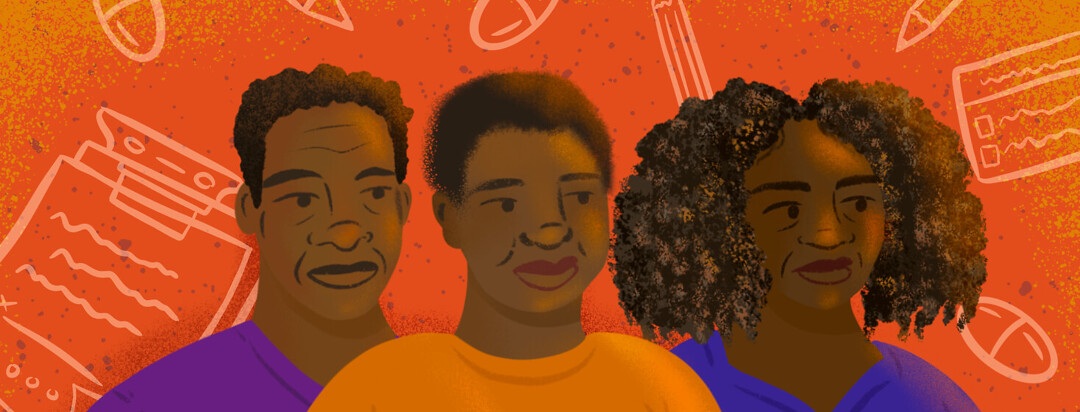Disparities in Headache Diseases
Today is June 19th. For most Americans, it is just another day in June with no particular significance. For Blacks and African Americans, it is Juneteenth. The day that marks the official end of slavery. Last year, CHAMP (Coalition for Headache and Migraine Patients) chose this day to observe Disparities in Headache Diseases Day for Migraine and Headache Awareness Month or MHAM. This was done to shed light on and bring much-needed awareness to the issue of health disparities in headache and migraine.
The importance of understanding disparities
In the United States, one in every six Black or African Americans has been diagnosed with migraine disorder, and one in every five has been diagnosed with tension-type headache. There are almost no studies on race-related gaps and associated healthcare inequities among patients with headache disorders. Understanding racial disparities in headache patients may help to inform the creation of culturally relevant healthcare policies and interventions that are more likely to diminish or eliminate race-related headaches.
History of Juneteenth
Juneteenth is the country's oldest and most widely observed commemoration of the abolition of slavery. The Union soldiers, led by Major General Gordon Granger, landed at Galveston, Texas on June 19th, 1865, with news that the war was over and that the enslaved had been set free. This was two and a half years after President Abraham Lincoln issued the Emancipation Proclamation, which went into effect on January 1, 1863.
Why it took two and a half years for Texas to receive the news remains in question. Several variations of what precipitated the delay have been handed down over the years, including a messenger being murdered on his way with the news of freedom, enslavers purposefully withholding the news to keep their labor force working on the plantations, and federal troops waiting for slave owners to cash in on their last cotton harvest before enforcing the Emancipation Proclamation in Texas.
A celebration of freedom
June 19th was coined Juneteenth and the celebration grew with the participation of the descendants of the freed slaves. Many activities were provided to entertain everyone who came to celebrate, some of which are continued in tradition today like rodeos, barbecues, fishing, and baseball. The focus of Juneteenth was education and self-improvement with guest speakers being brought in and elders recounting their stories of the past.
Today, Juneteenth is celebrated to recognize African American achievement and freedom, while still encouraging the community to participate in self-development and to respect all cultures. Juneteenth is a more national experience promoting a day of pride for all of this country's citizens.1
Disparities in headache
What does Juneteenth have to do with health disparities and headache diseases? It's important to recognize this day in history to understand the impact of systemic racism on institutions like healthcare. While prevalence rates are similar among whites, Blacks and African Americans (AA), and Hispanics and Latinx (15.5%, 15%, and 14.9%) research has shown a disparity in the disability, burden, diagnosis, and treatment of severe headache among the latter two groups compared to their white counterparts.2 According to a growing body of data, with Blacks and African Americans in particular, migraine is more common, severe, and likely to be chronic than it is among whites.
Where do these racial disparities stem from?
Even though the prevalence of migraine is similar across Blacks/AA, whites, and Hispanics/Latinx, discrepancies in migraine diagnosis and treatment suggest that Blacks/AA and Hispanics/Latinx are receiving less adequate care than whites. Blacks/AA and Hispanics/LatinX also use healthcare at a disproportionate rate relative to whites in terms of outpatient medical visits. When treatment is sought out by these groups, visits resulting in a migraine diagnosis are much lower for Hispanics/Latinx while Blacks/AA with severe headache is more likely to be diagnosed with probable migraine compared to whites.3,4
Why do these disparities exist?
Why these differences exist is not entirely clear to us. These issues are often under-researched and poorly understood. However, what is known is that the obstacles facing Black, Indigenous, People of Color, or
BIPOC are structural, institutional, social, and economic. Social determinants of health (SDOH) also contribute to health disparities and inequities.5 The health, well-being, and quality of life of people are influenced by SDOH. These include:
- Housing, transportation, and communities that are safe
- Racism, prejudice, and violence
- Education, career possibilities, and income
- Possibilities for physical activity and access to nutritional foods
- Air and water pollution
- Skills in language and literacy
Barriers to health care
People who constitute marginalized and underrepresented groups experience disproportionate rates of stress, trauma, and morbidity even when socioeconomic status is considered. When you begin to introduce barriers such as limited English proficiency (LEP), health insurance status (under or uninsured), and undocumented immigration status, these factors along with other SDOH may contribute to why these groups experience greater frequency and severity of migraine.
With inadequate health insurance, there are lower diagnosis rates and poorer results. Evidence continues to suggest that persons who have been historically, socially, and economically oppressed are disproportionately impaired by migraine and overwhelmed by pain and illness. Migraine is still misunderstood, misdiagnosed, and mistreated, although its prevalence and burden are continuing to rise.
Moving forward
There have been tremendous advances in research, technology, and therapies within the field of headache medicine. We also need to task ourselves in eliminating racial and health disparities in the diagnosis of headache disorders and patient care. All people living with a headache disorder, regardless of their ethnic or racial background and socioeconomic status, deserve equitable access to patient services and treatments. It is our hope that by creating awareness around these issues, we can start to close the gap on disparities in headache medicine.

Join the conversation